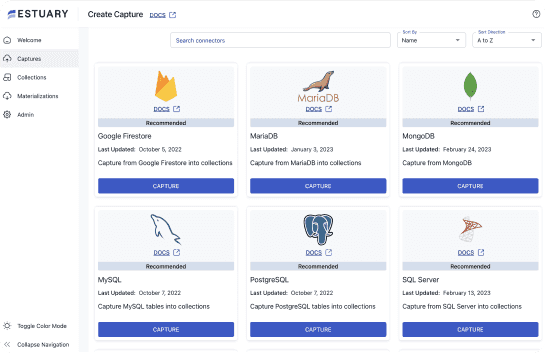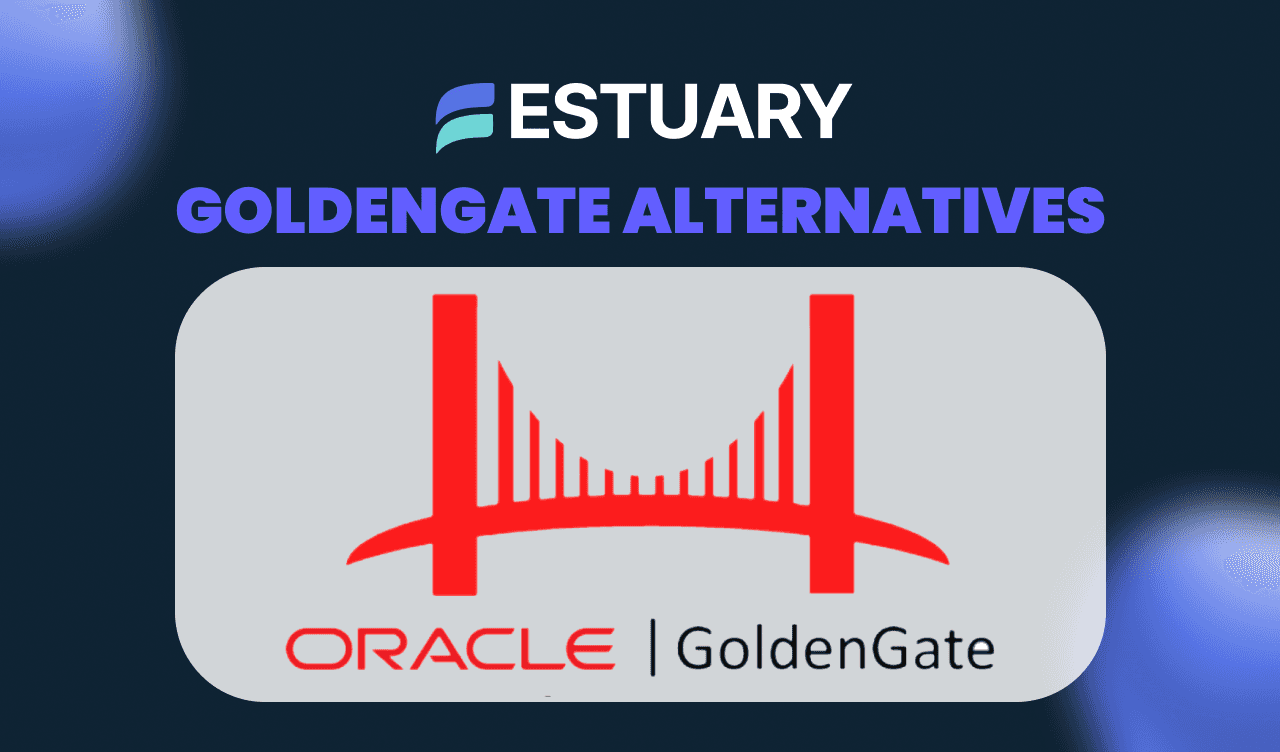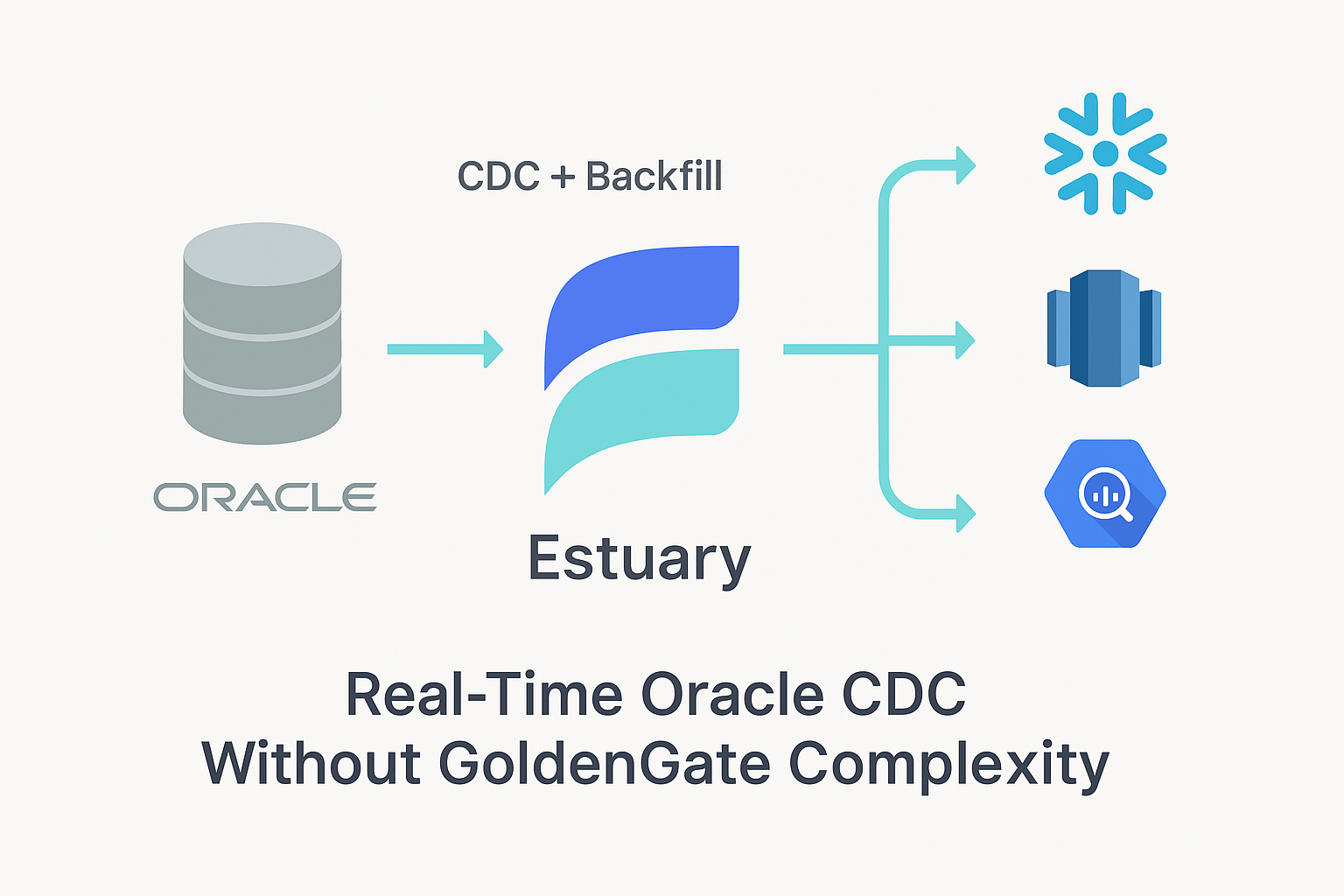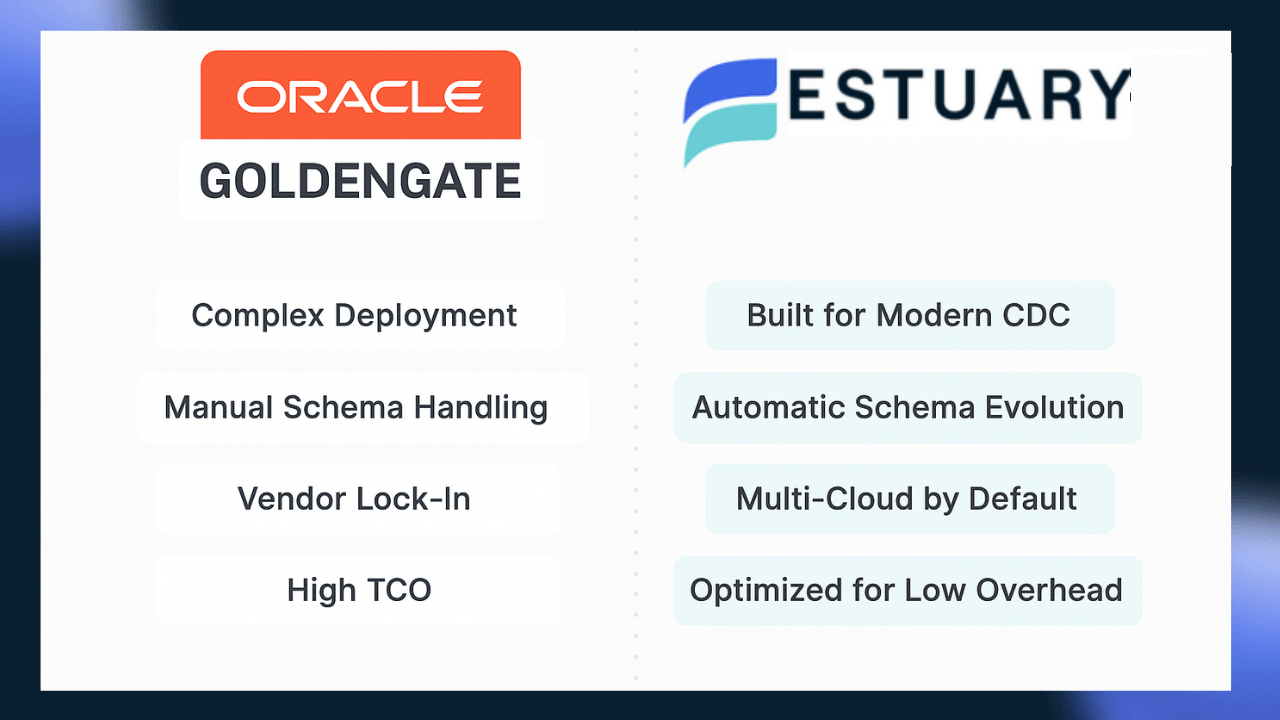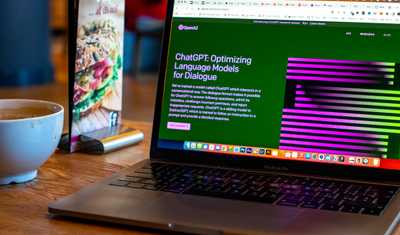
Introduction
Oracle GoldenGate is a trusted tool for data replication and Change Data Capture (CDC), widely used in enterprise environments. However, as modern architectures shift toward real-time data streaming, cloud-first infrastructure, and low-maintenance pipelines, GoldenGate shows its age.
If you're looking for a GoldenGate alternative that reduces operational friction, improves performance, and scales effortlessly across cloud and hybrid environments — meet Estuary Flow.
What is Oracle GoldenGate?
Oracle GoldenGate is a real-time data replication and Change Data Capture (CDC) tool developed by Oracle. It allows you to replicate transactional changes from a source database to a target database with minimal latency. GoldenGate is frequently used for:
- High availability and disaster recovery
- Data warehousing and analytics replication
- Zero-downtime migrations across environments
It works by reading the transaction logs (redo logs) of supported Oracle databases and propagating those changes through a series of processes (extract, pump, replicate). GoldenGate supports both classic and integrated capture modes, as well as microservices architecture in modern versions.
GoldenGate is compatible with Oracle Database versions like 12c, 18c, 19c, and newer, with increasing support for heterogeneous databases (SQL Server, DB2, MySQL, PostgreSQL). However, configuration varies by version — for instance, integrated capture is available only in 12c and above, while microservices architecture becomes a focus starting with 19c.
Why Organizations Are Moving Away from GoldenGate
GoldenGate still works well for traditional Oracle-heavy infrastructures, but it presents real challenges for modern, cross-platform data teams:
- Complex Deployment: GoldenGate requires deploying and managing agents, extract/pump processes, and configuration files across source and target systems.
- Manual Schema Handling: Schema changes often require stopping and restarting replication processes.
- Vendor Lock-In: While it supports non-Oracle databases, its architecture is optimized for Oracle-to-Oracle pipelines.
- High TCO: Licensing costs, infrastructure requirements, and operational burden add up — especially when managing multiple pipelines.
- Cloud Limitations: Adapting GoldenGate to work efficiently across GCP, AWS, and hybrid environments can be labor-intensive and fragile.
In short, GoldenGate was built for an on-prem world. Estuary Flow is built for today.
Estuary Flow: Built for Modern, Real-Time CDC
Estuary Flow is a fully managed, cloud-native CDC platform. It captures database changes in real time and materializes them to downstream systems — with built-in durability, backfill, schema evolution, and replay.
Key Advantages:
- Log-based CDC with Initial Snapshots: Estuary combines change capture with full table backfills into one unified stream.
- Automatic Schema Evolution: No manual restarts or reconfiguration when the source schema changes — Estuary adapts on the fly.
- Multi-Cloud by Default: Flow runs on your cloud (AWS, GCP, Azure) or Estuary’s fully managed service.
- Connectors for All Your Data: High-quality, low-latency connectors to integrate your data with Snowflake, BigQuery, Redshift, Kafka, S3, and more.
- Exactly-Once Guarantees: No duplicate records — even during failover, restart, or backfill.
- Replay and Backfill: Materializations can be replayed from any historical point in time without restarting your pipeline.
- Declarative Config: Pipelines are defined through Flow DSL or a visual UI — with the option to use advanced configuration files for further customization and CI/CD use cases.
Feature Comparison: GoldenGate vs Estuary Flow
| Feature | Oracle GoldenGate | Estuary Flow |
| CDC Support | Yes | Yes |
| Schema Evolution | Manual | Automatic (zero-downtime) |
| Deployment | Agents, config files | Fully managed / BYOC |
| Backfill Support | Yes (manual setup) | Native and automatic |
| Replay Historical Data | Complex or external tools | Built-in, on-demand replay |
| Multi-Cloud Support | Limited | Native and cross-cloud |
| Transformation Support | PL/SQL, custom scripts | SQL or TypeScript |
| Monitoring & Observability | External tools | Built-in dashboards, logs |
| Total Cost of Ownership | High (license + ops) | Optimized for low overhead |
Estuary Flow in Action: Real-Time Oracle Replication
Let’s say you’re currently using GoldenGate to replicate Oracle data to Snowflake or BigQuery. With Estuary Flow, you can:
- Connect your Oracle database (via log-based capture).
- Capture changes and perform an incremental snapshot automatically.
- Materialize that data to Snowflake in near real-time.
- Monitor pipeline health, latency, and errors from a single dashboard.
- Replay any missed data or backfill historical partitions on demand.
All without installing agents, writing transformation scripts, or restarting replication tasks when schemas change.
Related: Oracle Database Replication: A Modern Guide
Use Cases Where Estuary Shines
- Migrating Oracle workloads to Snowflake, Redshift, or BigQuery
- Replacing legacy ETL or CDC pipelines with streaming-native infrastructure
- Supporting hybrid and multi-cloud analytics architectures
- Feeding real-time dashboards and ML models with fresh operational data
Explore more Oracle-to-modern-stack guides:
- Oracle to Snowflake
- Oracle to Redshift
- Oracle to BigQuery
- Oracle to SQL Server
- Oracle to PostgreSQL
- Oracle to Microsoft Fabric
- Oracle to MariaDB
- Oracle to Kafka Streaming
How Estuary Compares to Other Oracle CDC Tools
Oracle has had several CDC-related technologies over the years. Here’s how Estuary stacks up:
- Oracle Streams vs GoldenGate: Streams was Oracle’s early CDC approach, now deprecated. GoldenGate replaced it with a more robust log-based model. Estuary achieves similar goals with less setup and cloud-native design.
- Oracle Active Data Guard vs GoldenGate: Data Guard replicates entire databases for HA, not granular CDC. Estuary is purpose-built for CDC — event-based, schema-aware, and analytics-ready.
- XStream vs GoldenGate: XStream provides API-based CDC, but with limited ecosystem support. Estuary handles change capture, schema drift, and delivery across your full pipeline.
- GoldenGate vs SharePlex: Dell’s SharePlex is another CDC option, but lacks Estuary’s ease-of-use, observability, and modern integration features.
Final Thoughts: Don’t Modernize with Legacy Tools
GoldenGate is reliable — but it’s not designed for agility. If you’re building the next generation of data infrastructure, retrofitting legacy replication tools will slow you down.
Estuary Flow offers a modern, streaming-native alternative to GoldenGate:
- Real-time
- Fully managed
- Schema-flexible
- Multi-cloud
Replace complexity with simplicity. Replace overhead with automation. Replace legacy with Flow.
👉 Start your free trial or schedule a demo to learn how Estuary can replace GoldenGate for your team.

About the author
With over 15 years in data engineering, a seasoned expert in driving growth for early-stage data companies, focusing on strategies that attract customers and users. Extensive writing provides insights to help companies scale efficiently and effectively in an evolving data landscape.

